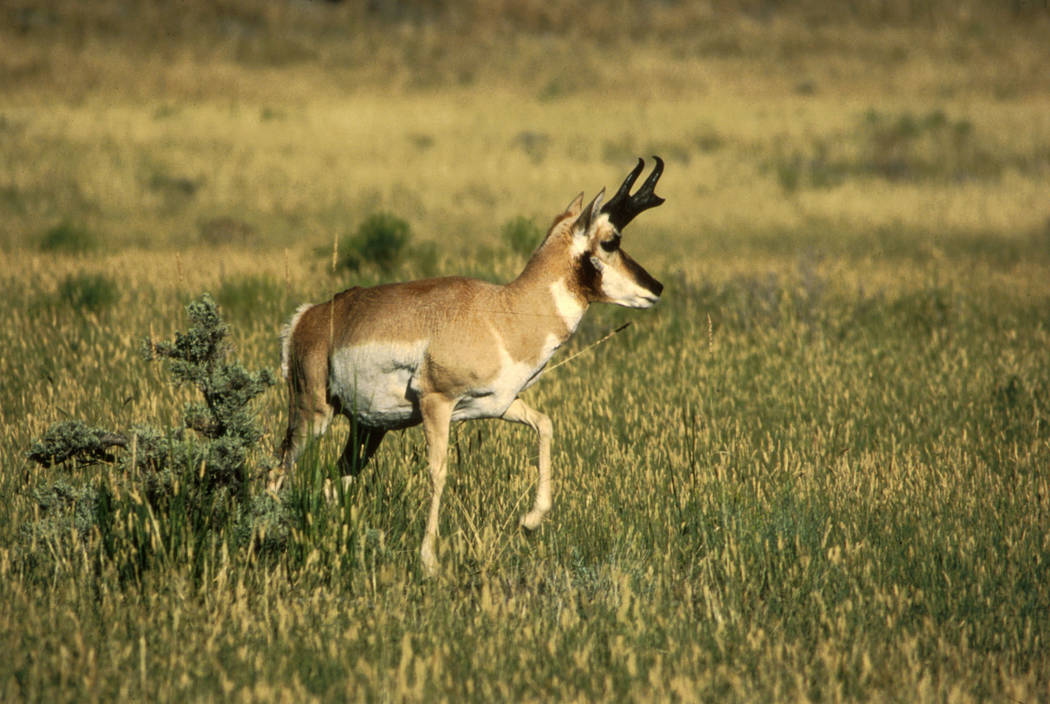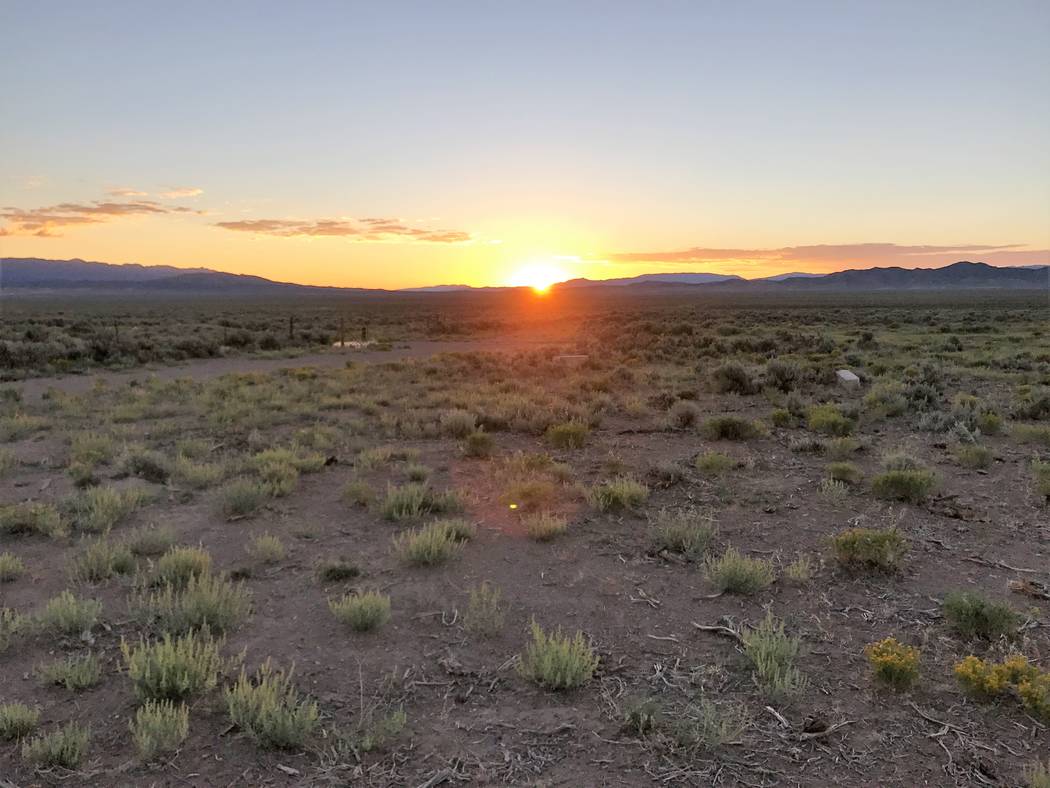It’s time to take a shot at those speedy pronghorn antelope
Nevada’s big game hunting seasons begin Thursday as archers take to the field in search of America’s speediest big game animal, the pronghorn antelope.
Sometimes referred to as speed goats, the pronghorn antelope has been clocked at speeds pushing 60 mph. That’s second fastest to the cheetah worldwide, a sprinter that has a burst of speed capable of reaching 70 mph but is short-lived.
The pronghorn, though, is like a well-trained distance runner. It can sustain speeds of 30 mph or more for miles, but can sprint whenever more speed is needed. That ability, combined with excellent vision, helps the pronghorn avoid predators such as coyotes and mountain lions and can make things challenging for hunters.
My friend and I had the chance to witness this speed and endurance during an antelope hunt two years ago. While glassing from a vantage point high on a hillside, we spotted a small heard of pronghorns hanging out near an old homestead in a remote valley. It was late August, and the rut was getting underway.
Monitoring the herd was a medium-sized buck that was busy gathering does for his harem. Once he added a doe to the group, the buck did everything he could to keep her and the others from wandering off. Every now and then, a doe would break loose and start running for distant pastures, but that buck would have none of it.
On several occasions, we watched as that buck ran for two or three miles in one direction until he turned the doe back toward his harem. Then he would run that full distance back to the herd, pushing the wayward doe in front of him. This happened over and over, but the buck never lost a step. The burst of speed he needed was always available.
Something to keep in mind is that pronghorn bucks are territorial during the rut. They mark the boundaries of their territories with a scrape line in much the same way that a whitetail deer does. The animal paws the dirt until it is loose and then urinates on the diggings. He lets the urine run over scent glands on his hind legs and carry that scent into the scrape.
The buck tends to his scrapes on a regular basis as a warning to would-be interlopers. Find that scrape line and you will find a place where a buck is sure to be at some point.
Since the archery season begins so early, hunters can overcome a pronghorn’s speed by setting up a blind and hunting over water. During the 2018 season, a friend arrowed a pronghorn from a pop-up blind he set up over a spring that ran for a short distance before going underground again.
Another pronghorn trait that has helped hunters fill their freezer is curiosity. They will investigate things they don’t understand. For example, some years ago, my sons and I were stalking a dandy pronghorn in central Nevada. My youngest had difficulty holding still and would periodically stand up and walk around until I barked at him to sit down.
Each time he dropped, that buck would walk 20 or 30 yards in our direction. Unfortunately, I wasn’t paying attention to what was happening and eventually chose to leave that buck and look elsewhere. It wasn’t until we had put 60 miles between us and the buck that I realized what had been taking place.
Sure, that buck had us pegged and never took his eyes off our position, but he also was curious about that camo-clad kid that popped up and down. Had we stayed where we were, there is a chance we might have put that buck in the freezer. Part of hunting is the learning, and I would like to have a do-over on that one.
Something else I have learned is that antelope don’t always follow the stereotypes outlined in articles in outdoor magazines. While pronghorn antelope prefer wide-open grasslands with low-growing vegetation where they can see long distances, I have found antelope in narrow canyons with thick vegetation. And my last two pronghorn hunts have ended with a buck taken in broken terrain with waste-high brush.
It never hurts to try something or somewhere out of the ordinary.
Freelance writer Doug Nielsen is a conservation educator for the Nevada Department of Wildlife. His “In the Outdoors” column, published Thursday in the Las Vegas Review-Journal, is not affiliated with or endorsed by the NDOW. Any opinions are his own. Find him on Facebook at @dougwritesoutdoors. He can be reached at intheoutdoorslv@gmail.com.


















